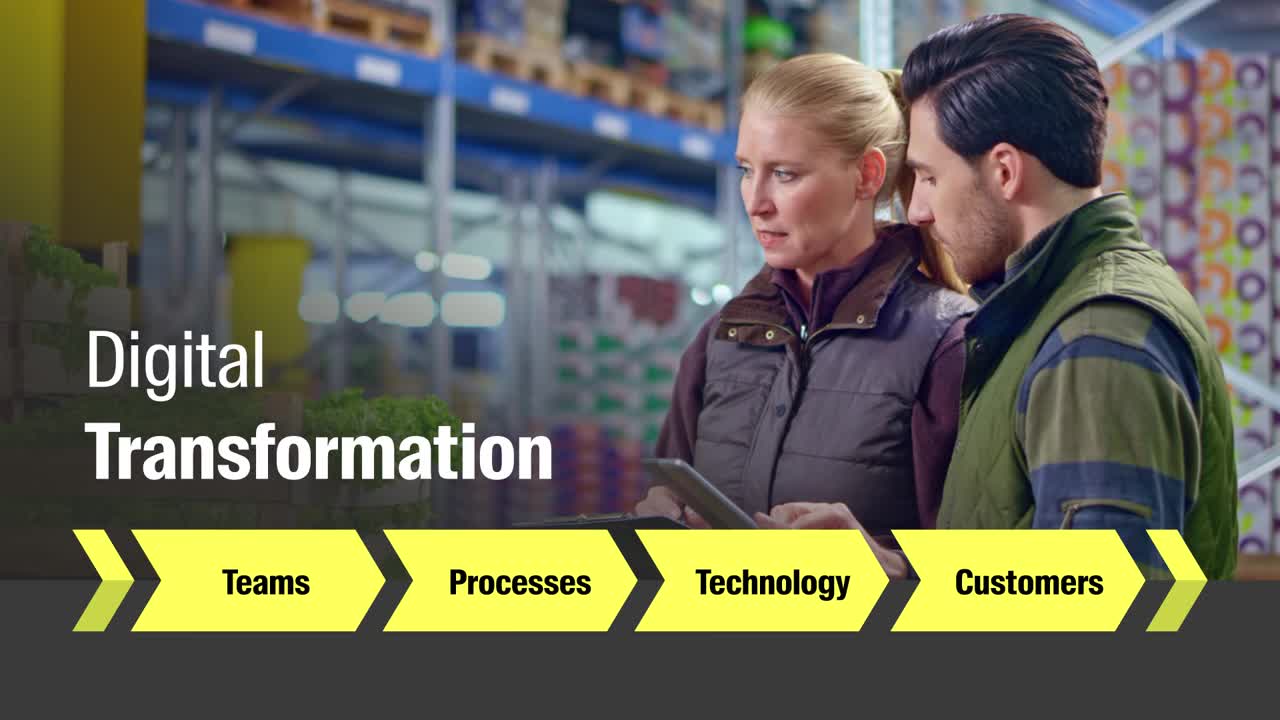Destacado en este post
What Is Digital Transformation and What Does It Look Like in Practice?
What Is Digital Transformation and What Does It Look Like in Practice?
10 Nov 2022
Roy Thomas
Global spending on digital transformation initiatives is forecast to reach $1.8 trillion in 2022, which means two things for companies.
You need to prioritize digital transformation in your business strategy to remain competitive.
Your digital transformation roadmap needs to be clear and well executed to keep pace with market leaders.
If you’re new to digital transformation, this blog is a great starting point. Keep reading to learn what digital transformation is, what it looks like in practice and which digital technology investments can help to build your transformation strategy.
This article is an introduction to digital transformation. For a deeper dive into this subject, take a look at one of these resources:
What Is Digital Transformation?
Digital transformation (DX) is the act of integrating your data and business processes using digital technology, and then using that technology to leverage insights that enhance your business strategy, company culture and customer service.
It’s a step beyond digitization, which is converting analog assets into digital data, and digitalization, where manual systems are replaced with business software.
While digitization and digitalization focus on the process of changing data and workflows, digital transformation centers on outcomes and value. It addresses questions such as how can you use digital technology to work smarter, faster and with greater agility? And, how can you better meet the needs of your customers, employees and other stakeholders?
Digital transformation is critical to future-proofing your business. We’ve all seen the impact of failing to react to changing industry landscapes: look at what the streaming revolution did to Blockbuster or the digital imagery movement to Kodak.
What Does Digital Transformation Look Like?
The exact path to digital transformation depends on many factors, including your company’s size, maturity, sector, budget and goals. In addition, it isn’t the work of one department, such as IT, operations or marketing. Digital transformation is a collective goal.
Some organizations focus on investment in cloud computing to enable flexible access to work systems and real-time data. Others focus on implementing operational technologies, like enterprise resource planning (ERP) software, to automate processes for faster production and performance.
While digital transformation has the power to shape and optimize your business from end to end, some companies choose to focus on one particular issue initially. One example of this is the supply chain: digital transformation allows your business to analyze and extract unstructured supplier data in order to gain valuable insights and deliver on customer needs.

For companies with more advanced technology capabilities, digital transformation may look slightly different. Mature companies are often focused on using digital technology to look ahead, enhancing forecasting capabilities and predicting performance. Others leverage business intelligence (BI) tools and analytics to make increasingly smarter and more accurate decisions in critical areas such as marketing, sales and product development, to enhance their wider business strategy.
It's also important to remember that digital transformation is a cultural initiative as well as a technological framework. A strong digital transformation strategy will connect your workforce through real-time data to support closer, collaborative working relationships.
What’s Included in a Typical Digital Transformation Roadmap?
Many organizations know they need to digitally transform, but don’t know where to start. So let’s look beyond the definition of DX to what a digital transformation roadmap can look like.
The exact details of your digital transformation journey will depend on your current capabilities and resources, existing digital technology stack, overarching business strategy and more. You should be wary of any company providing an arbitrary list of solutions without looking at your goals and objectives as a logical start point.
That being said, there are some common technologies and systems implemented during digital transformation that your company may benefit from. For example:
Moving from manual processes and manual, on-premise systems to cloud computing technology
Investing in process automation systems such as ERP software for operational efficiency
The key to a successful digital transformation program is to agree and prioritize your strategic business goals and map technology investment to that hierarchy. Focusing on digital technology that will make the greatest change to your business will add immediate value and maximize return on investment (ROI).
For example, food and beverage manufacturers may prioritize ERP and overall equipment effectiveness (OEE) software to make production more profitable. Meanwhile, a cosmetics manufacturer may focus on product lifecycle management (PLM) software to improve innovation and get new ideas into production quickly. Lower priority or more complex functionality can always be added at a later date.
If you operate in these sectors, our posts on digital transformation in the food industry and software to boost cosmetics and personal care manufacturing contain more information.
Or, you can check out our guide to the fundamental digital transformation steps for any business to help you ensure success.
Digitally Transform Your Company in Partnership With Aptean
Digital transformation is so much more than automating manual processes or extracting more operational data; it’s an opportunity to reimagine how your company does business. And most organizations recognize that significant change is on the horizon: according to McKinsey research, 9 in 10 firms think their business model needs to change in the next couple of years (if their model hasn’t changed already).
Planning and executing a well-considered digital transformation roadmap is critical to ensuring you keep pace with industry expectations and add real value. It will also help you to articulate your needs when choosing a vendor to partner with in implementing new digital technology.
Aptean specializes in helping companies across a diverse range of sectors including fashion, food and beverage and manufacturing digitally transform their businesses.
Aptean ERP solutions unify operational data and processes for clear decision-making. We provide sector-specific software for industries including food and beverage, industrial manufacturing, process manufacturing, imports, distribution and retail and fashion and apparel.
We also provide sector-specific PLM and WMS technologies to support organization-wide digital transformation initiatives without the hassle of managing multiple vendors and siloed systems. And, no matter where you’re at in your digital transformation journey, we pride ourselves on acting as a partner throughout the process, providing best practice guidance alongside our advanced solutions to accelerate your growth.
Get in touch with the digital transformation experts at Aptean for help and support with your digital transformation strategy. Or, dive deeper into the benefits of digital transformation for your business.
¿Todo listo para transformar tu negocio?
Tenemos el software especializado en tu sector que ayudará a tu organización a prosperar.



